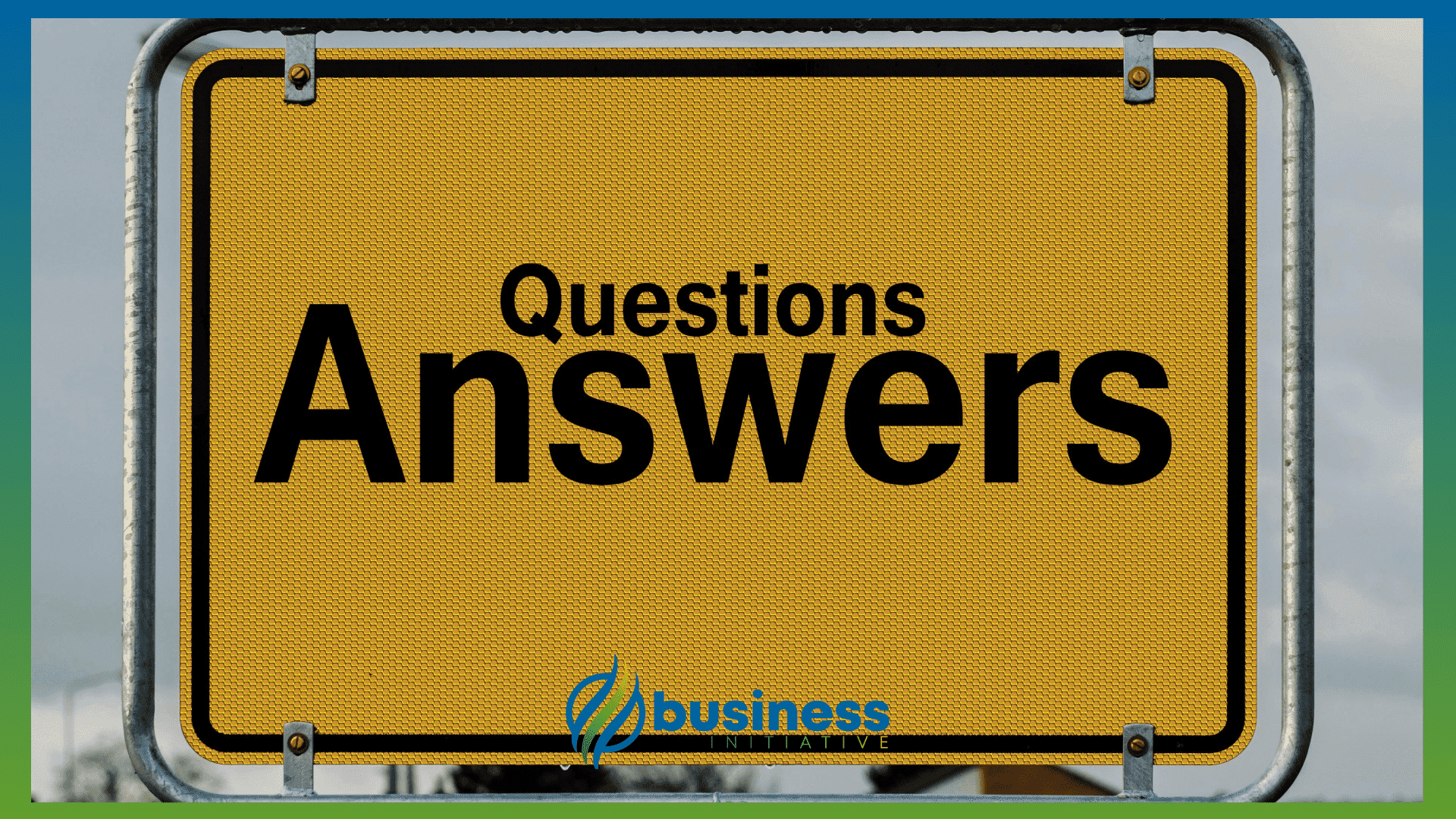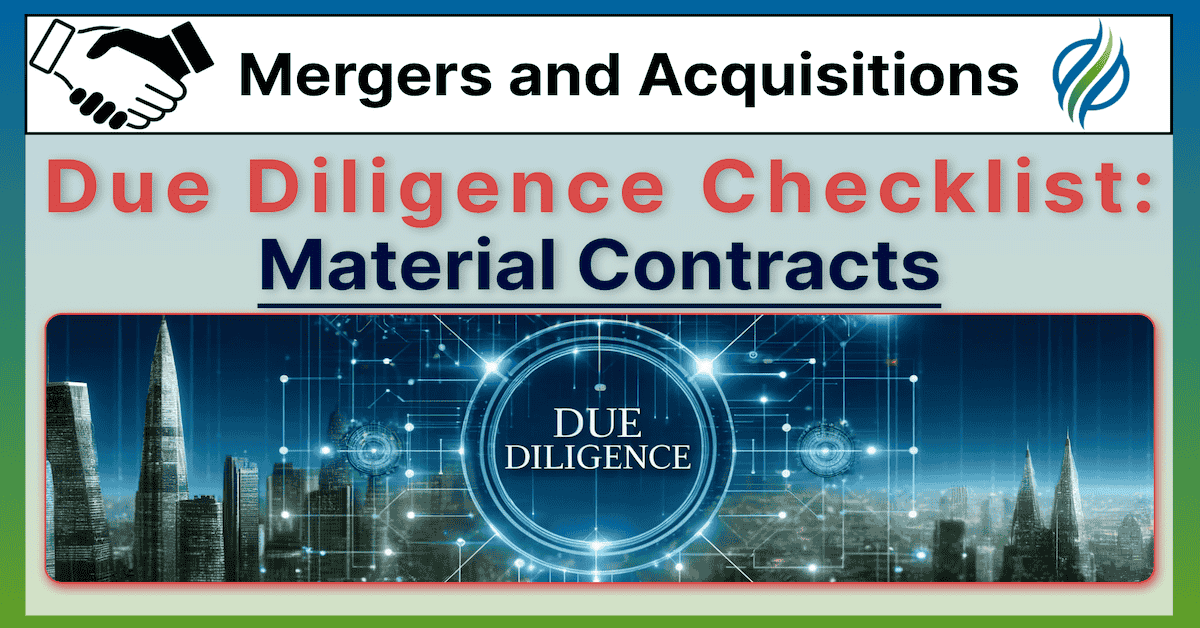Material contracts form the backbone of a company’s operational and financial health, making their review one of the most vital and detailed aspects of due diligence in mergers and acquisitions (M&A).
These contracts encompass a wide array of agreements including customer and supplier contracts, employment agreements, and other significant legal commitments.
Conducting a thorough analysis of these documents not only reveals the stability and reliability of the target company’s business relationships but also uncovers potential risks that could impact the transaction’s success.
 Key Takeaways
Key Takeaways
- Review customer and supplier contracts to identify stability and potential risks.
- Evaluate employment agreements to understand compensation, benefits, and retention clauses.
- Verify partnership and joint venture agreements for profit-sharing and management responsibilities.
- Identify change-of-control provisions that could impact contract validity post-acquisition.
- Use self-assessment questions to gauge readiness and uncover hidden liabilities.
In this article, we delve into the critical aspects of due diligence for mergers and acquisitions, focusing on the review of material contracts.
Understanding these contracts is vital.
It ensures you uncover potential risks and secure key business relationships.
This guide explains why these contracts matter and how they impact your acquisition.
It offers practical steps and self-assessment questions to help you navigate the process.
To get the most out of this article, follow each section closely.
Apply the practical steps provided.
Make sure to answer the self-assessment questions.
 Table of Contents
Table of Contents
Ready to master M&A due diligence?
Keep reading to discover how to review material contracts effectively.
Understanding the nuances and implications of each contract is crucial.
This process involves verifying key terms and conditions, identifying any change-of-control provisions that might be triggered by the acquisition, and assessing the overall impact on the target company’s operations and financial health.
By meticulously reviewing material contracts, you can ensure that there are no hidden liabilities or surprises that could derail the transaction or diminish its value.

➤ MORE: Check out the FULL Due Diligence Checklist here
Review Customer and Supplier Contracts
Reviewing customer and supplier contracts is essential for evaluating the stability and sustainability of the target company’s revenue streams and supply chain.
These contracts often contain critical terms and conditions that can significantly affect the company’s operations post-acquisition.
Practical Benefits:
-
Identifies the stability of business relationships.
-
Reveals potential risks and liabilities.
-
Helps in assessing the continuity of revenue streams and supply chains.
Importance:
-
Ensures that key business relationships are secure.
-
Detects any unfavorable terms that could impact future operations.
-
Highlights change-of-control provisions that might affect the transaction.
Practical Steps:
-
Obtain Contracts: Collect copies of all major customer and supplier contracts.
-
Verify Terms: Examine the key terms, conditions, and clauses, including pricing, delivery schedules, and obligations.
-
Identify Change-of-Control Provisions: Look for any provisions that may be triggered by the acquisition, potentially affecting the validity or terms of the contract.
-
Assess Stability: Evaluate the stability and reliability of these relationships, considering factors such as the length of the contracts and the reputation of the partners.
-
Analyze Risks: Identify any risks associated with these contracts, such as termination clauses or penalties that could be enforced.
Self-Assessment Questions:
-
What are the key terms and conditions of major customer and supplier contracts?
-
Are there any change-of-control provisions that could be triggered by the acquisition?
-
How long are the remaining terms of these contracts?
-
Are there any termination clauses or penalties?
-
How critical are these contracts to the company’s operations?
Links to Resources:
Evaluate Employment Agreements
Employment agreements with key employees are fundamental to maintaining the operational integrity and workforce stability of the target company post-acquisition.
These agreements often include critical details about compensation, benefits, termination conditions, and other employment terms that can significantly affect the success of the M&A transaction.
Practical Benefits:
-
Ensures the retention of key employees.
-
Identifies potential liabilities related to compensation and benefits.
-
Clarifies non-compete and non-solicitation clauses that protect the business.
Importance:
-
Maintaining continuity and expertise within the workforce.
-
Avoiding unexpected financial obligations related to employee benefits and severance.
-
Protecting the company from competitive threats through enforceable non-compete clauses.
Practical Steps:
-
Gather Agreements: Collect copies of employment agreements for all key employees.
-
Review Compensation and Benefits: Examine the terms related to salaries, bonuses, benefits, and any other forms of compensation.
-
Analyze Termination Clauses: Identify the conditions under which employees can be terminated and any associated severance obligations.
-
Check for Non-Compete Clauses: Ensure there are enforceable non-compete and non-solicitation clauses that protect the company’s interests.
-
Evaluate Retention Incentives: Assess any special retention or incentive agreements designed to keep key employees post-acquisition.
Self-Assessment Questions:
-
What are the key terms and conditions of employment agreements for key employees?
-
Are there any non-compete or non-solicitation clauses?
-
What are the termination provisions and severance obligations?
Links to Resources:
Review Partnership and Joint Venture Agreements
Partnership and joint venture agreements are integral to understanding the collaborative efforts and external relationships that contribute to the target company’s growth and operations.
These agreements outline profit-sharing arrangements, management responsibilities, and other critical terms that define the nature of these business relationships.
Practical Benefits:
-
Provides insight into collaborative relationships and shared ventures.
-
Highlights potential conflicts of interest and risks.
-
Clarifies management responsibilities and profit-sharing arrangements.
Importance:
-
Ensures alignment with the company’s strategic goals.
-
Identifies any legal or financial risks associated with these partnerships.
-
Facilitates smooth integration and continuity of joint ventures post-acquisition.
Practical Steps:
-
Collect Agreements: Obtain copies of all partnership and joint venture agreements.
-
Verify Terms: Examine key terms, including profit-sharing arrangements, management responsibilities, and decision-making processes.
-
Assess Risks: Identify any potential risks or conflicts of interest that could impact the partnership.
-
Evaluate Performance: Review the performance and contribution of these partnerships to the overall business.
-
Check for Change-of-Control Provisions: Look for any provisions that may be triggered by the acquisition, potentially affecting the partnerships.
Self-Assessment Questions:
-
What are the key terms of partnership and joint venture agreements?
-
How are profits and losses shared among partners?
-
What are the management responsibilities and decision-making processes?
-
Are there any risks or conflicts of interest associated with these agreements?
Links to Resources:
FAQs - Frequently Asked Questions About Material Contracts

Why is reviewing customer and supplier contracts important in M&A?
It helps identify the stability of business relationships and potential risks.
Learn More...
Reviewing customer and supplier contracts is crucial because it provides insights into the stability and reliability of key business relationships.
These contracts often include terms that can significantly impact the continuity of revenue streams and supply chains post-acquisition.
By identifying any unfavorable terms or change-of-control provisions, you can mitigate risks and ensure a smooth transition.
- Stability of business relationships.
- Identification of potential risks.
- Impact on revenue streams and supply chains.
- Mitigation of unfavorable terms.
What should I look for in employment agreements during due diligence?
Focus on compensation, benefits, termination provisions, and retention clauses.
Learn More...
When reviewing employment agreements, key elements to examine include compensation packages, benefits, termination provisions, and any non-compete or non-solicitation clauses.
Understanding these details helps ensure key employees are retained post-acquisition and identifies potential liabilities related to severance obligations.
Special retention or incentive agreements should also be assessed to maintain continuity and expertise within the workforce.
- Compensation packages.
- Benefits and perks.
- Termination provisions.
- Non-compete and non-solicitation clauses.
- Retention or incentive agreements.
How do change-of-control provisions affect M&A deals?
They can alter or terminate contracts if the company is acquired.
Learn More...
Change-of-control provisions are clauses in contracts that may be triggered by an acquisition, potentially altering or terminating the agreement.
These provisions are designed to protect the interests of the other party in the contract and can significantly impact the value and stability of the transaction.
Identifying and understanding these provisions early in the due diligence process is essential to prevent any surprises and ensure a smooth acquisition.
What are partnership and joint venture agreements?
They are agreements outlining terms of collaboration between businesses.
Learn More...
Partnership and joint venture agreements define the terms and conditions of collaborative efforts between businesses, including profit-sharing, management responsibilities, and decision-making processes.
These agreements help establish clear expectations and responsibilities, reducing the risk of conflicts and ensuring a smooth operational relationship.
Reviewing these agreements during due diligence provides a comprehensive understanding of the company's external collaborations and potential risks.
- Profit-sharing arrangements.
- Management responsibilities.
- Decision-making processes.
- Risk reduction.
Why is it essential to evaluate termination clauses in contracts?
To understand potential liabilities and penalties.
Learn More...
Termination clauses specify the conditions under which a contract can be ended and the associated penalties or obligations.
Evaluating these clauses is essential to identify potential liabilities that could arise if contracts are terminated prematurely.
This understanding helps in assessing the financial impact and negotiating terms that protect the acquiring company’s interests.
- Conditions for contract termination.
- Associated penalties or obligations.
- Potential liabilities.
- Financial impact assessment.
How can I use self-assessment questions during due diligence?
They help evaluate readiness and uncover potential issues.
Learn More...
Self-assessment questions are a valuable tool during due diligence, helping to systematically evaluate the target company's contracts and agreements.
These questions guide you in identifying key terms, potential risks, and areas that require further investigation, ensuring a thorough and effective due diligence process.
Using these questions can uncover hidden liabilities and provide a clear picture of the company's contractual landscape.
- Evaluate readiness.
- Identify key terms.
- Spot potential risks.
- Uncover hidden liabilities.
In Summary…
Wrapping up, reviewing material contracts thoroughly is key to a successful merger or acquisition.
By diving into customer and supplier contracts, you understand the stability of business ties and spot potential risks.
Looking at employment agreements helps you grasp crucial compensation and retention details, ensuring key employees stay on board.
Checking partnership and joint venture agreements gives you a clear view of collaborative efforts and profit-sharing setups.
It’s also vital to pinpoint change-of-control provisions to avoid any surprises that could impact contracts after the acquisition.
Putting this info to use helps you uncover hidden liabilities, secure vital contracts, and make the transition smooth.
Use the self-assessment questions to gauge your readiness and tackle any issues before closing the deal.
This thorough approach cuts down on risks and boosts the value of your acquisition.
Ready to elevate your due diligence?
Schedule a consultation call with Business Initiative today or reach out by using our contact form to ask any questions you may have.
For more insights and updates, subscribe to our Initiative Newsletter and follow us on X.
Sources
- Contract Management Tools: For effective contract management solutions.
- Guide to Reviewing Contracts: For in-depth contract review guidelines.
- Additional Information on Due Diligence: For comprehensive due diligence insights.
- HR and Employment Law Resources: For human resources and employment law information.
- Employment Agreement Templates: For customizable employment agreement templates.
- Guides on Employee Retention: For strategies on retaining key employees.
- Joint Venture Agreement Templates: For customizable joint venture agreement templates.
- Guides on Partnerships: For advice on managing business partnerships.
- Resources on Managing Business Relationships: For tips on maintaining effective business relationships.


